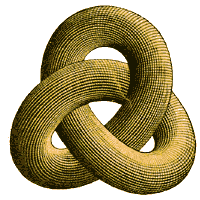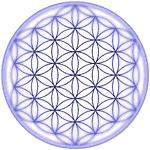
Ayurveda
Ayurvedic medicine places the human being within the greater context of Nature (Prakriti) and, secondly, within a relationship to Universal Consciousness (Atman or Purusha). Its focus is on restoring the health of both our body and mind through rebalancing the fundamental elements residing within us: Earth, Water, Fire, Air and Ether.
In Ayurveda, imbalances are seen to occur within the body through specific combinations of elements called doshas, which are each made up of two elements. There are three possible doshas and, as individuals, we are generally composed mostly of a blend of two main doshas from the following three possibilities:
- KAPHA = Earth and Water
- PITTA = Fire and Water
- VATA = Air and Ether
 For example, someone might be 60% Kapha, 30% Pitta, 10%Vata. That person would be considered a Kapha-Pitta type. When our doshas fall out of balance, diseases occur. The doshas can be understood in modern scientific terms as relating to micro-processes within physiology. For example, a Vata disturbance will often correlate with chaotic firing of neurons, or disregulations within the autonomic nervous system. A Pitta disturbance will often correlate with an inflammatory process such as rheumatoid arthritis or an ulcer. And a Kapha imbalance will frequently correspond with problems such as cysts, obesity or accumulation of oxidized fats within tissues.
For example, someone might be 60% Kapha, 30% Pitta, 10%Vata. That person would be considered a Kapha-Pitta type. When our doshas fall out of balance, diseases occur. The doshas can be understood in modern scientific terms as relating to micro-processes within physiology. For example, a Vata disturbance will often correlate with chaotic firing of neurons, or disregulations within the autonomic nervous system. A Pitta disturbance will often correlate with an inflammatory process such as rheumatoid arthritis or an ulcer. And a Kapha imbalance will frequently correspond with problems such as cysts, obesity or accumulation of oxidized fats within tissues.
In the mind, Ayurveda sees another triad which can potentially go out of balance—the gunas:
- TAMAS = Inertia
- RAJAS = Movement
- SATTVA= Harmony
Ayurveda usually seeks to induce greater levels of Sattva within the mind, and this is the basis of its psychological approach oriented towards serenity and freedom from stress, dependency and delusion.
How Is Ayurveda Used At Eclectic Healing Arts?
We use Ayurvedic herbs to treat symptoms of illness whenever they are clearly connected with imbalances within the doshas or gunas. We also use Ayurvedic theory regarding the subtle bodies and chakras when perfoming Vibropuncture, which accesses these subtle organs. In Ayurveda, the three principal energy channels are the Shushumna, the Ida and the Pingala nadis.
Yoga Therapy
We provide passive and active yoga therapy for those patients with painful muscle and joint conditions that do not respond well to other forms of treatment. Such patients require actual lengthening of muscles and myo-fascial release in order to become pain free. In the passive form, the patient lies on the table or on the floor, and is actually stretched into a pose with direct pressure or pulling action applied to the patient's muscles. In the active form, the patient is taught a customized sequence of poses and guided through these movements.
Yoga and Ayurveda are closely related. They are interdependent and work together to release body and mind of tension and blockages.


